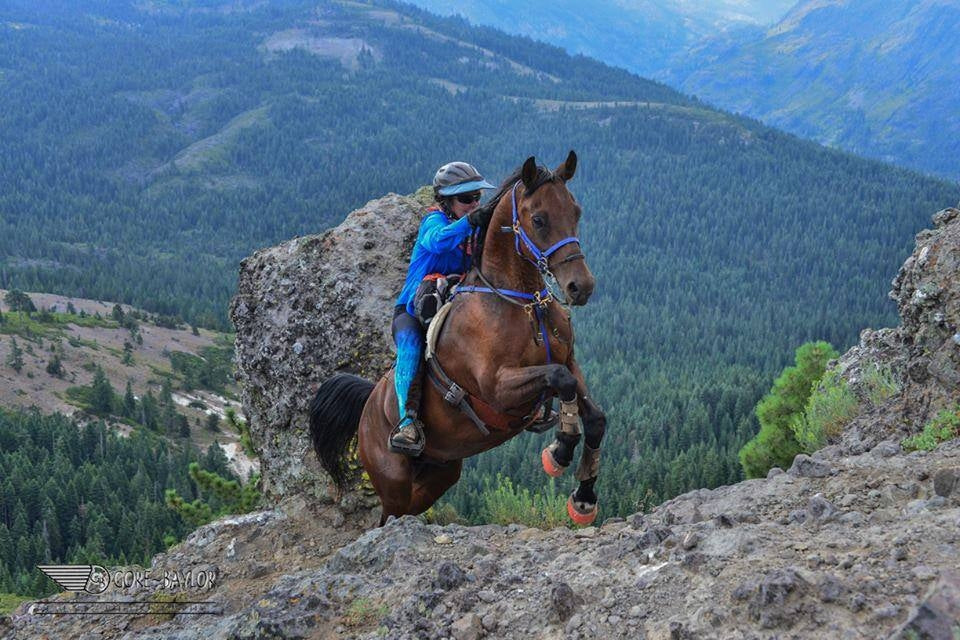Renegade® Hoof Boots are designed to be quick and easy to install.
No mallets to bang the boot on, no hoof picks to lever straps into place - no force required! Your hoof boots should slip on smoothly, and allow you to easily slide the heel captivators up and into place.
Even doing up the velcro straps is a force-free process as Renegades are designed to fit the shape of the horse's hoof, and the patented pivoting heel captivator design means that the boot can flex and move with your horse's hoof.
A safety note for the first time putting hoof boots on your horse
Most horses adapt immediately to the feel of Renegade hoof boots and walk off calmly as the boots are lightweight (especially the Vipers) and do not restrict their hoof movement. However, every horse is different, so the first time you put hoof boots on your horse please do this in a clear area, and have somebody hold your horse's lead rope rather than tying your horse. If your horse is not already used to wearing hoof boots, lead him gently forward to get the feel of the hoof boots and then let him spend some time turned out in an arena or similar enclosure with the boots on, until you are satisfied your horse is non-reactive toward wearing them. We recommend that you seek the help of an equine professional if you are unsure about your safety when using, installing or removing hoof boots.
Preparing the boots and the hooves
Always inspect your hoof boots before use to be sure they are clean, and all parts (cables, straps, heel captivator, boot and tread) are in good usable condition, the correct fit and correctly adjusted for your horse.
And of course, please ensure your horse's hooves are picked out and clean.
How to Install your Hoof Boots
If you're a visual learner, click for an install video here or watch this short video explainer!
1. Release the pastern strap and the toe strap of your boots and pull the heel captivator down below the boot sole.
2. Pick up the hoof and insert the hoof into the boot. The hoof should easily slide into the boot shell. If you have to force it on, the hoof boot is too small, or if the boot normally fits, your horse may be overdue for a trim.
Be sure the boot is centered on the hoof. You can check the center of the tread is aligned with the center of the horse's heel.

3. Gently seat the boot onto the hoof with the palm of your hand, and pull the heel captivator well up onto the heel bulbs. If the heel captivator is tight, you may need to lengthen the cables.

8. Place the hoof onto the ground and double check the heel captivator position. Here is a full article on this, and a short video too.

9. Slip the toe strap through the keeper so it's not lying on the ground but do not fasten yet. First, fasten the pastern strap, making sure that it has some clearance to the pastern.
THE PASTERN STRAP SHOULD NOT BE TIGHT!
This video explains why. The pastern strap must be loose enough to allow the heel captivator to find its equilibrium with the bulbous shape of the heel bulbs, and flex with the horse's hoof movement. This is why we created our patented pivoting heel design.
You should see a gap under the pastern strap like this - you should be able to slip FOUR fingers under the strap (or three if you have a large hand).

Why must the pastern strap be loose?
The pastern strap is NOT the primary means of boot retention, this is the job of the heel captivator. The pastern strap is a “check strap” to prevent the heel captivator from pulling downward off the heel bulbs (for example in the event of an overreach from a hind hoof or interference with opposing hooves or when riding through heavy brush etc.) An overly tight pastern strap may even force the heel captivator up against the backside of the pastern bones which could lead to rubbing.
Keep in mind that just as the pasterns descend during weight loading, and they also move forward just before the hoof leaves the ground. If the pastern strap is too tight, then this forward movement of the pastern acts upon the heel captivator pulling it forward and upward in an undesirable cyclic manner. Some horses with long pasterns or a lot of “drop” to their pastern movement may need even more clearance than shown - if in doubt, speak with our team via the web chat now.
When you are happy with the pastern strap adjustment, press the strap well together to bond the velcro, and secure the end by pushing it under the rubber keeper loop.

Here is a short video on fastening the straps.
10. Now ensure that the heel captivator is centered on the heel bulbs, and wiggle the toe strap so that the steel cables each side of the velcro have clearance from the plastic keepers.
Place the fingers of one hand on the pulley side of the cable to hold it still, then pull the end of the velcro strap across to remove any slack, and fasten it, secure the end of the strap by pushing it under the rubber keeper loop. Centering the velcro while fastening prevents the velcro sliding to one side and helps keep the heel captivator centered on the horse's heel bulbs.

NOTE: It is not necessary to use any force or tighten the strap past a nice snug fit. Think about tightening the laces on your own shoes - the strap should sit "snug" but not "tight".
Each horse owner will need to experiment with tension settings to discover what degree of tension works best for the way your horse moves, the speed you ride and the environmental conditions you ride in. In all cases you should always start with 'looser' settings, and work your way up from there if needed. If you are having boot retention problems, setting the strap “super tight” is NOT the solution.
11. After setting the tension on the toe strap, double check the pastern strap clearance and re-adjust if necessary. Make sure you have that 4 finger gap still.
12. Also double check that the heel captivator is positioned well up onto the heel bulbs. If needed, lift the hoof back off the ground so you can better check the heel captivator position. It is important that the heel captivator is positioned properly so as to align with the bulbous contours of the heel bulbs, allowing the pressure acting upon the heel bulbs to be spread evenly. If in doubt check our heel captivator positioning guide.





